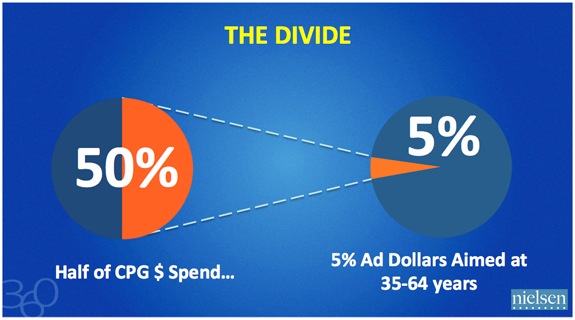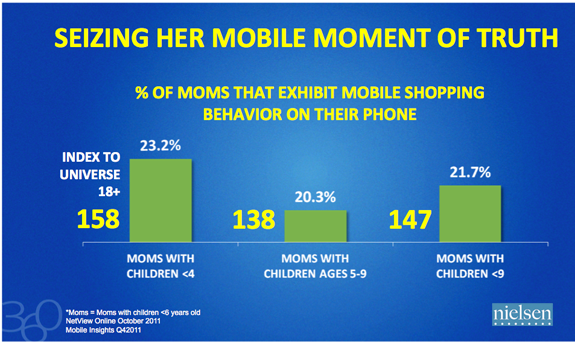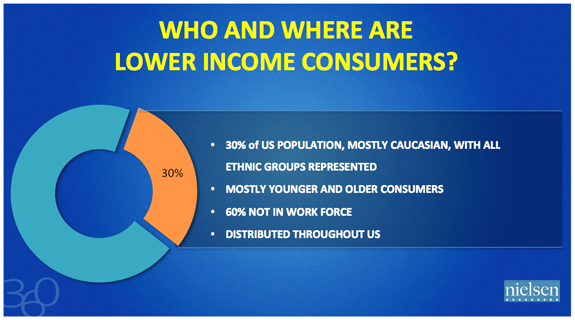At Nielsen’s Consumer 360 Conference, speakers and attendees discussed the attributes, inclinations, and behaviors various consumer groups in the U.S. In a session titled “Marketing that Matters,” three unique consumer groups were identified and analyzed to provide a fresh perspective on the opportunities these segments represent for marketers.
Baby Boomers
Baby Boomers—Americans born between 1946 and 1964—number 80 million, and have long been the most marketing-friendly consumers in the country’s history. Their sheer number has amplified their impact and transformed every product category they have embraced. Today, boomers are rapidly growing out of the 18-49 cohort — long thought to be a sweet spot for marketers — but this generation is simply too big, valuable, and important for marketers to revert to the traditional “cut-off” at age 49.
Instead, they remain important as ever to the success of marketers and brands. Today, the 50+ age group consists of almost 100 million consumers, and by 2030, it will grow another 34 percent.
Today, boomers account for nearly $230 billion in sales for consumer packaged goods (about half of total sales), and in five years, they will control a full 70 percent disposable income in the U.S. They will continue to dominate spending, yet advertising dollars are being funneled elsewhere.
“Whatever the reasons for this divide, it’s a missed opportunity,” said Beth Brady, Nielsen’s leader for marketing effectiveness.

Media Moms
Today’s moms in America direct most of American family spending, but are harder to reach via media and marketing than in decades past.
Moms with children under six watch less TV overall than the general population, but fit in their favorite programs by watching two more hours of time-shifted TV per month than the adult population generally. But mom is clearly not a couch potato; she’s often multitasking while consuming TV content. On any given day, 67 percent of moms use the internet while watching TV simultaneously.
With busy lives, it’s no surprise that moms are early tech adopters, always open to new technology that may make them more efficient. Tablets are quickly becoming one of mom’s favorite media devices. About a quarter of moms with tablets use them while watching TV several times a week.
Smartphones, meanwhile, still play a big role in many aspects of moms’ lives, and they are quickly becoming an important venue for moms and their shopping. More than 20 percent of moms with children are experimenting with mobile shopping.
“These moms are showing a propensity to engage in commerce-related activity on their phones, whether price-checking, searching, or pure financial transactions,” said Jessica Hogue, a senior vice president of client solutions at Nielsen.

Polarized Consumers
Much attention of late has been paid to increasing income disparity in the United States. Lower income consumers—those who earn less than $30,000 per year—are a growing segment and now represent about 30 percent of the country’s population. While these consumers, not shockingly, spend less overall than average, they collectively represent a big part of the country’s total spend and are expected to grow in the future.

This segment of consumers engages with media across all screens. In fact, they spend more time online than other income groups, averaging more than nine hours a month on Facebook and streaming more online video than other consumers as well. Lower income consumers also watch more TV than other consumers and are particularly accessible via daytime television.



